Squirrels belong to the group Rodents and are identified by the presence of constantly growing incisors to aid these creatures in gnawing. More than 250 species of squirrels are identified from all over the world, except in Australia. Squirrels adapted to different habitats and formed particular categories on that basis. There are three types of groups of Squirrels in Canada: tree squirrels, ground squirrels, and flying squirrels.
Canada houses all three types of squirrels, and around 22 different species of squirrels are found there, including 5 chipmunks, 4 marmots, and 1 prairie dog.
Most squirrels are also major pests there, as they build nests in backyards and can eat the flowers or dig up the garden. However, no one will deny their cuteness and great acrobatic skills.
10 Types of Squirrels in Canada
1) Eastern Gray Squirrel
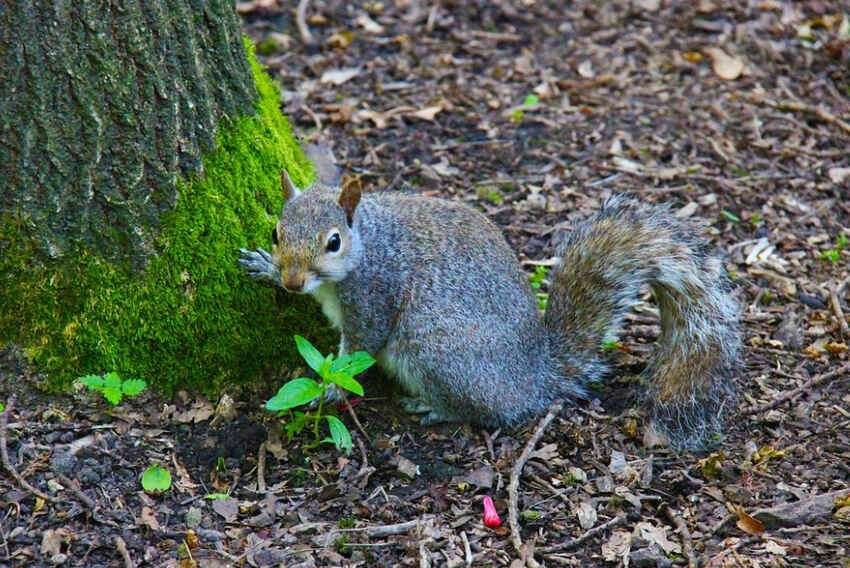
- Scientific Name: Sciurus carolinensis
- Size: 23–30 cm
- Color: primarily grey with a yellowish tinge; black morphs also exist.
- Life Span: 6–12 years; up to 20 years in captivity
Identification: They can be visually identified by their white bellies and the presence of white color on the edge and top of their tails.
Eastern gray squirrels are located in the midwestern and eastern United States and on the southern sides of central Canada, including Ontario, Quebec, and Nova Scotia. They also tend to share their native land with fox squirrels, with whom they’re commonly confused.
These squirrels are known to have a superb sense of smell, which assists them in locating food that they hide away. They have a unique way of communicating with one another through tail-flicking.
2) Fox Squirrel
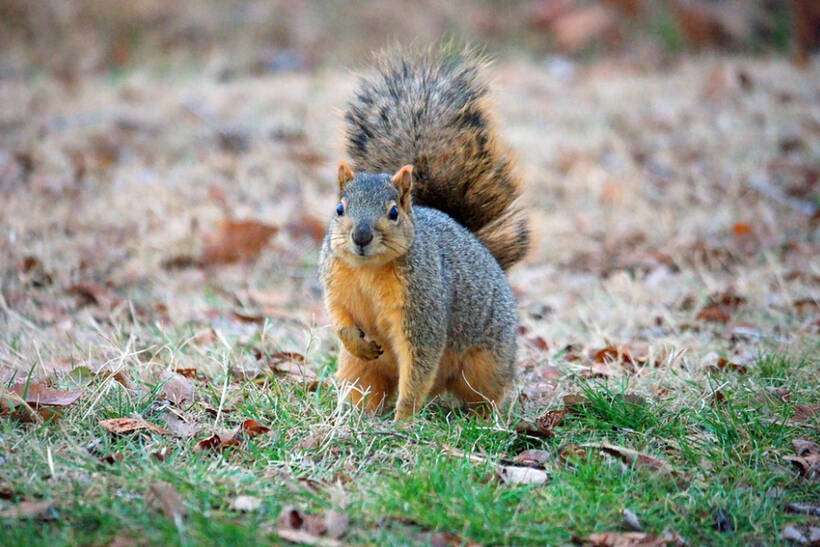
- Scientific Name: Sciurus niger
- Size: up to 70 cm
- Color: They are rufous grey with darker upperparts and have beige-yellow undersides.
- Life Span: 6-7 years
Identification: They have a black patch on their heads with a whitish nose and straw-colored, long tails.
Fox squirrels got their name from grey foxes because they have a reddish-gray fur coat and similar color patterns to those of grey foxes. They are found in the eastern United States, northern Mexico, and Canada.
In Canada, they are extended over certain southern portions and occur primarily in British Columbia and Ontario.
3) American Red Squirrel

- Scientific Name: Tamiasciurus hudsonicus
- Size: 28-35 cm
- Color: rust-red
- Life Span: 6-7 years
Identification: Their characteristically bushy tail with distinctively large ear tufts and their reddish-brown fur coat with a cream-colored belly distinguish them from other squirrels.
They reside in most parts of Canada that have dense tree cover, excluding the northern parts. These squirrels can be found in the southern half of Alberta and the southwestern coastal areas of British Columbia. They are also abundant in Newfoundland.
American red squirrels are also commonly known as pine squirrels, North American red squirrels, Hudson’s Bay squirrels, and chickarees.
4) Northern Flying Squirrel
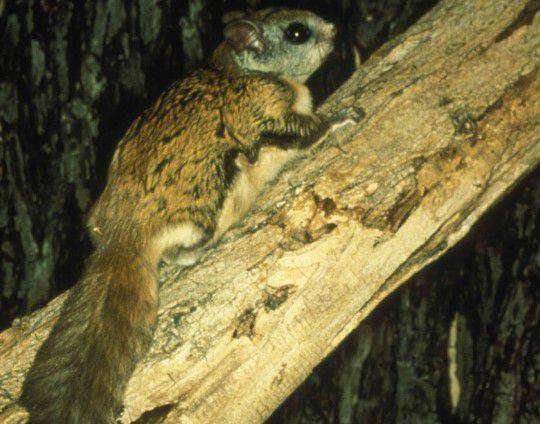
- Scientific Name: Glaucomys sabrinus
- Size: 25-37 cm
- Color: cinnamon-brown
- Life span: up to 4 years
Identification: They are differentiated from other flying squirrels by their gray-colored belly fur base, whereas other flying squirrels mostly have light-colored belly fur. These squirrels also have distinctively long whiskers.
They are located in coniferous and mixed coniferous forests in Canada, from Alaska to Nova Scotia. They have sort of a patchier distribution.
Northern Flying Squirrels can glide up to 150 feet or more from an altitude of 60 feet, depending on the air currents, using their patagia.
5) Douglas Squirrel
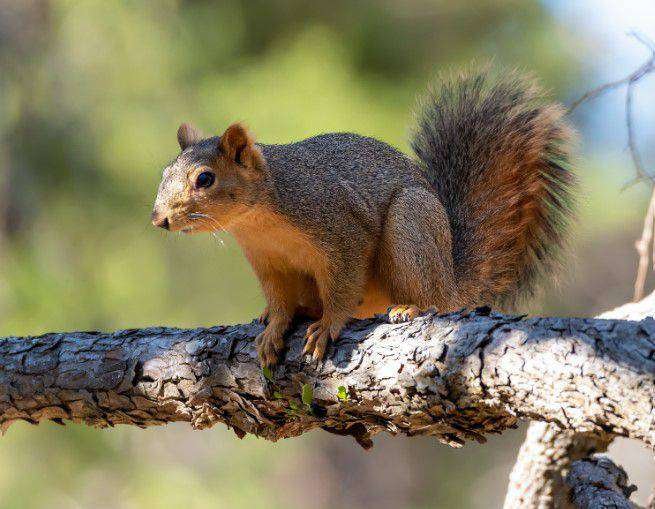
- Scientific Name: Tamiasciurus douglasii
- Size: up to 33 cm
- Color: olive-black upper parts and pale orange undersides; color changes with the seasons.
- Life Span: 5–6 years
Identification: Douglas squirrels can be identified by the presence of ear tufts in winter and have a distinctive buff-orange belly with a clear-cut color contrast between the fur of the upper body and belly.
Douglas Squirrels are indigenous to British Columbia and can only be found on the province’s southern coasts. They also inhabit coniferous forests along the Pacific Coast.
Previously, American Red Squirrels were present in these areas but have since been replaced by Douglas Squirrels.
6) Southern Flying Squirrel
- Scientific Name: Glaucomys volans
- Size: 21-26 cm
- Color: Rusty-brown
- Life Span: up to 5 years in the wild and 10 years in captivity
Identification: This species of flying squirrel is strangely similar in size to chipmunks, which are ground-dwelling squirrels. So, these are distinctively bigger than northern flying squirrels.
Southern flying squirrels can be found in Canada along the northern shores of Lakes Erie and Ontario, as well as the east sides of southwestern Quebec. They are located throughout the eastern United States.
Though both of the mentioned flying squirrels are found throughout Canada, due to their nocturnal behavior, it’s quite rare to spot them.
7) Thirteen-lined Ground Squirrel
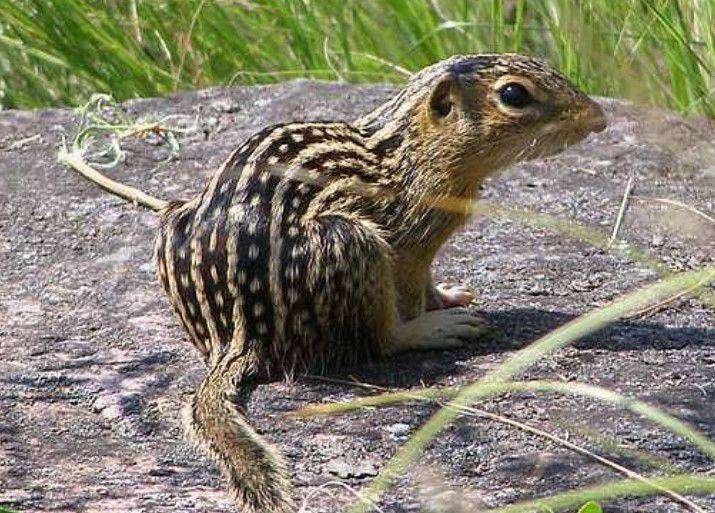
- Scientific Name: Ictidomys tridecemlineatus
- Size: 17–30 cm
- Color: golden-yellow with distinctive dark-colored stripes
- Life span: up to 2 years
Identification: They are distinguished from chipmunks by the presence of thirteen longitudinal lines that alternate between dark brown and white. These stripes are also broken into yellowish spots in some portions.
Thirteen-lined Ground Squirrels are located in southern Alberta and Canadian provinces such as Saskatchewan and Manitoba.
Thirteen-lined ground squirrels are proven to have an impact on the plant community by eating plant foliage and seeds. They also aid in recycling soil nutrients through their constant burrowing activities.
8) Columbian Ground Squirrel
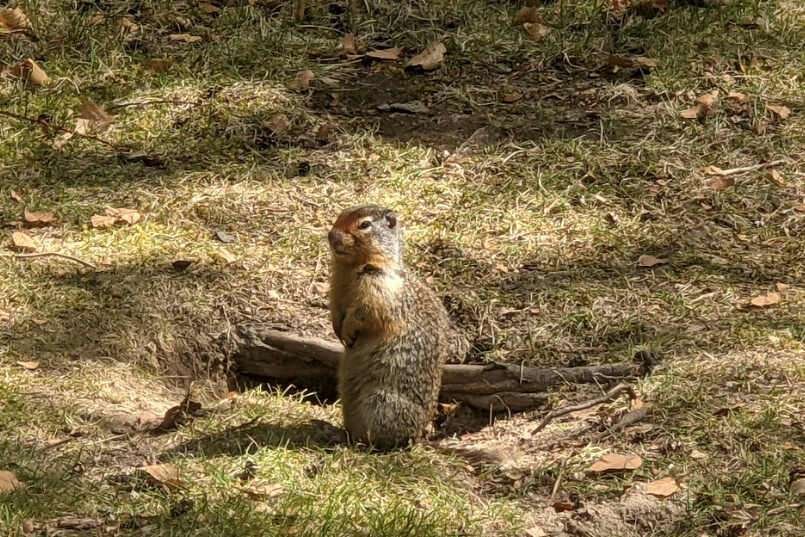
- Scientific Name: Urocitellus columbianus
- Size: 32-41 cm
- Color: grey to brownish-black
- Life Span: 2-3 years
Identification: It has a distinctively white-speckled dorsal with rusty-brown colored nose, hindquarter, and forelegs.
As their name suggests, they are found in eastern British Columbia and western Alberta in Canada and are also located all over western North America.
Columbian ground squirrels are social creatures and build intricate burrows with proper toilets and hibernation chambers.
9) Arctic Ground Squirrel

- Scientific Name: Urocitellus parryii
- Size: 20-25 cm
- Color: Tawny-brown
- Life Span: 8–10 years
Identification: Stout with a beige-tan coat and mottled white back, distinguishable by a thin, long tail.
Arctic ground squirrels are located in northern British Columbia, the Yukon Territory, and the mainland of the Northwest Territories in Canada. They are also found in Siberia.
Alaskan locals called these squirrels “parka” because their fur is used to make the ruffs of long coats, known as parka.
These squirrels have a unique way of camouflaging and pressing their bodies flat against the ground to stay hidden from sight.
10) Richardson’s Ground Squirrel
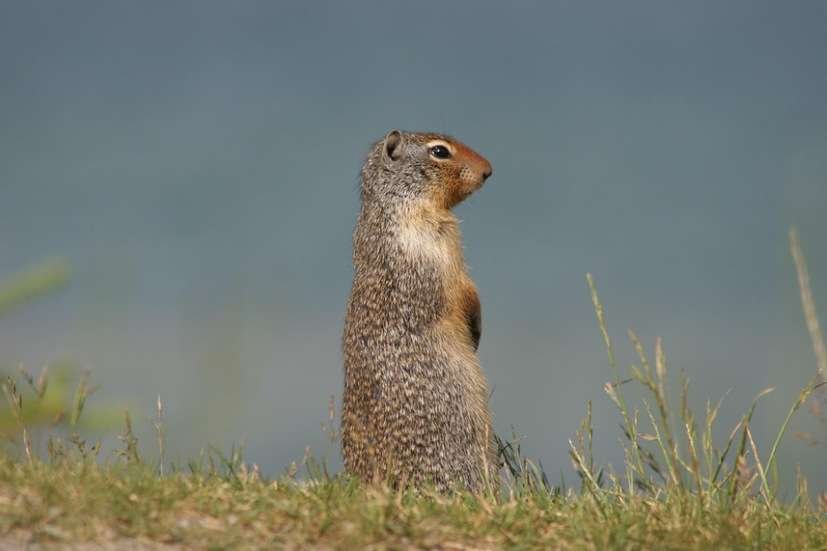
- Scientific Name: Urocitellus richardsonii
- Size: up to 30 cm
- Color: dark-brown
- Life Span: On average, females live up to 4 years and males up to 1 year.
Identification: constantly trembling or flickering tail
Richardson’s ground squirrels are found in the Canadian provinces of Alberta, Manitoba, and Saskatchewan, as well as other plains of North America.
They are also commonly known as “dakrats” or “flickertails,” and recently, these squirrels have become more popular in the exotic pet trade.
Conclusion:
Squirrels are surely adorable to watch, and their skill sets are amazing enough to blow our minds, so if you’re lucky enough to find one, observe their behavior and their cute little world, and next time if you find any squirrel digging up your backyard you will certainly identify them and have info regarding them, thanks to us! Here, we conclude our article.
References: Wikipedia, Animalia- squirrels
Also Read:

Hey there! I’ve been the kid who used to love watching all the science stuff and that fascination lead me to choose Zoology as my Major in Graduation. I’m a self-taught writer and spend my time writing scintillating content on animals. I love observing animals behavior and their bond with humans. I want to give my point of view regarding animals i research about. I had done several projects on animals during my graduation and learned their behavior thoroughly.
